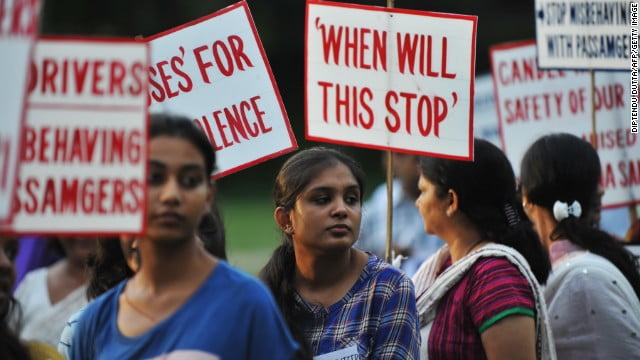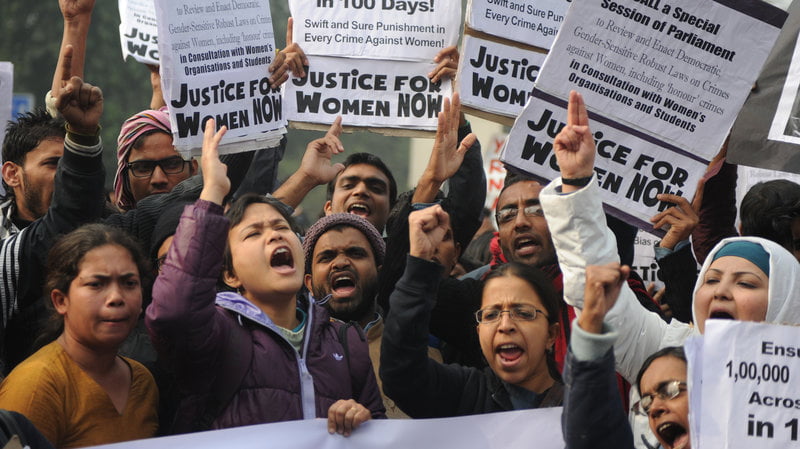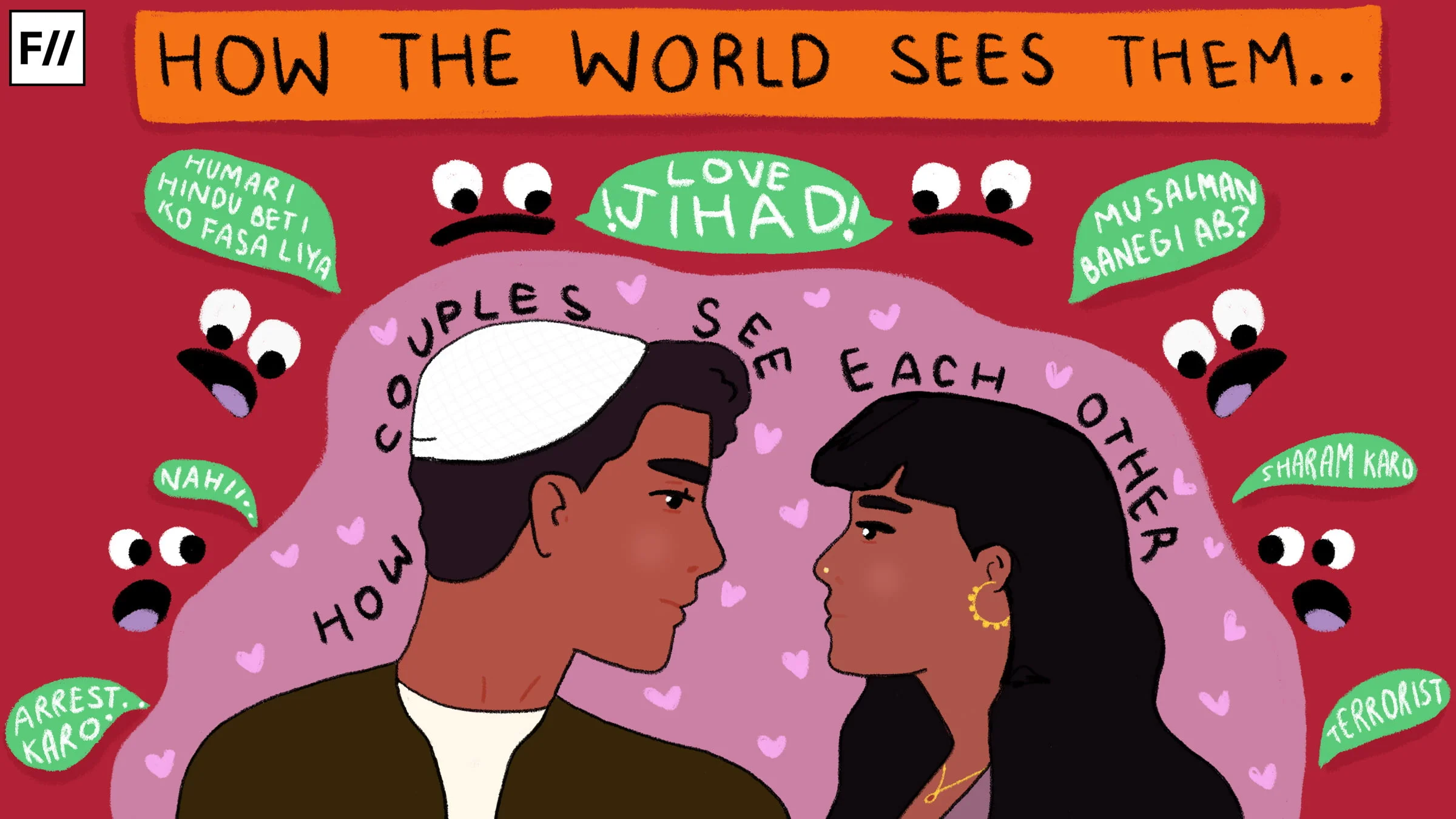With the intense social media uproar on the encounter killings of the 4 main accused in the Hyderabad rape-murder case; people are intensively cheering for the policemen and calling for death sentence for rapists. Celebrating encounters mean that we want to be done with the case as early as possible. When we kill criminals, we are implying that we don’t want to follow due process. This does not guarantee justice or emancipation from the rape culture.

The case raised several eyebrows. For one, this brings up important, age-old questions:
What will be the impact on society on death penalty?
Is it successful in mitigating a problem? Why are we outraging on this incident specifically?
Is it really that easy for four unarmed people to shoot at a group of policemen?
Why were the accused taken to re enact the scene at 3:30 AM?
The Outrage
The first point that comes up, is the limelight that this rape has received. While not demeaning the pain of the victim in any way, and not diminishing the anger people have had, the question sure comes to mind: Why this rape?

There are hundreds of such cases that become statistics and newspaper headlines, while receiving zero outrage. Women are subjected to everyday harassment in some form or the other everyday. Under the constructs of marriage (as marital rape is not criminalized; and physical violence is not reported as often), in workplace, under the constructs of the Armed Forces Special Powers Act (AFSPA), to list a few. Rape is seen as a “loss of dignity and honour” and such a narrative contributes more towards rape culture.
There are four things about this rape that has made it easier for people to outrage.
1) The woman is dead, so there is no responsibility towards the society to get her justice, a quick, knee jerk reaction suffices.
2) There is violence apart from the rape itself. that is why people are angry, because rape culture is so normalised in our society by now, rape is not seen as brutality in itself.
3) The victim was an upper-caste, able bodied, cisgendered woman. Victims from the Dalit-Bahujan-Adivasi community are raped and murdered often and there is not much of an uproar about it. The Hijra community suffers sexual violence at the hands of policemen and not a smidgen of anger about it is seen. This means people see victims with a privileged lens and do not understand that marginalised communities have been and are most vulnerable to such crimes.
The Hijra community suffers sexual violence at the hands of policemen and not a smidgen of anger about it is seen. This means people see victims with a privileged lens and do not understand that marginalised communities have been and are most vulnerable to such crimes.
4) The perpetrators were faceless, poor and marginalised, themselves. In the wave of #MeToo, several victims were asked to follow “due process”, to prove their allegations; to prove that it was really the person in power that was the perpetrator.
Why then, in this case, did we forget to ask for due process and instead were confronted to calling for the lynching, castration, and hanging rapists?

This is why the Telangana police shot “alleged” rapists in their custody. This does not happen in cases of non-sexual physical assault, sexual harassment, sexual assault without “brutalities”. Chinmayanand is in the hospital and the victim is in jail, because he is a powerful person, with a face, and a previous history that people judge him by.
The Encounter
Post the encounter, lots of activists have been asking the police to explain the encounter, because it appears to be a staged.
“They shot at the police team and we retaliated in self-defense,” the Telangana police said.
How did four unarmed, apparently untrained men manage to overwhelm and assault a whole group of trained police officers, grab their weapons and open fire? Why was the crime scene recreation taking place at 3:30 AM? If, as the police say, the suspects tried to escape, why were they fired directly in the chest? How were all four men shot?
How did four unarmed, apparently untrained men manage to overwhelm and assault a whole group of trained police officers, grab their weapons and open fire? Why was the crime scene recreation taking place at 3:30 AM? If, as the police say, the suspects tried to escape, why were they fired directly in the chest? How were all four men shot?
Article 21 of the constitution states, “No person will be deprived of his life or personal liberty except in accordance with the procedure established by law.“
Fake encounters have been the norm for the last few years. Take the case of Uttar Pradesh, where there have been 1142 encounters between March 20, 2017 to January 2018. Most of these cases had no investigation and as Markandey Katju writes, encounters are used by the police to just close cases.

Examples of such cases are as follows:
- Furqan from Shamli was imprisoned for seven years because of his involvement in some sort of a village fight; his family members did not have enough funds to help bail him out or fight his case. In 2017, he was unexpectedly released. He was one day, shot at out of the blue and the police claimed he was involved in 36 dacoity cases; and tried to escape and fire at the police. The glaring question. How did he manage to rob 36 houses if he was in jail? Postmortem reports showed signs of torture and bullet wounds.
- Sumit Gurjar was picked up on September 30, last year by plain-clothed policemen from a bus stop at Badhaut in Baghpat. His family heard the rumour that he might be killed in an encounter. The next day, it was declared that Sumit had died in an encounter while trying to escape in a car after robbing a cash van of a bank. The police claimed Sumit had several cases of robbery and extortion filed against him. The bizarre truth, however, surfaced that Sumit had no police case against him ever. There was another man Sumit Gurjar, who stayed in the same Chichretta village and had the exact same cases against him back in 2011.

Sadly, extrajudicial killings in India are not recent. Police and security forces used them in different contexts in the past to assuage uprisings such as in the 1960s in the states of Bengal, and in the 1980s in Punjab. The social backgrounds of those murdered in the Uttar Pradesh ‘encounters’ show most of them came from socially marginalized groups like Dalits, Other Backward Classes (OBCs) and Muslims.
It is easier to persecute marginalised communities when law acts like a goon, and police are then used as a tool to suppress dissent. Scroll had obtained 19 first information reports (FIRs) filed by police in the district of Khunti between June 2017 and July 2018, charging more than 11,200 people with a myriad of crimes relating to upsetting public order. Sedition under section 124A of the Indian Penal Code is one of the offenses committed in 14 FIRs.
Does Death Penalty Bring Justice?
Now comes the question of whether death penalty is effective. The policy of death penalty is ineffective to women and unfair for men from less fortunate societies. It makes it seem like rapes are a rarest of the rare crime, where in fact it is almost a daily occurrence. Capital punishment will deter justice to the victims in the following ways:
- Capital punishment is known to make it harder for women to report people she knows. Family members, friends, etc. Deterring rapists should be the solution, not deterring womxn who report.
- Capital punishment will make rapists want to kill their victims because then they will not be able to report.
Also read: How Could The Media Have Done Better In Covering The Hyderabad Rape-Murder? | #GBVinMedia
A research by Project 39A found that, “Prisoners sentenced to death in this country were almost always disadvantaged and belonged to oppressed sections of society.” The study shows that among the inmates they surveyed, 74.1 percent of the prisoners sentenced to death were “economically vulnerable” (based on their occupation and landholding), and 76 percent belonged to deprived groups and religious minorities. The death penalty process is then, not condusive to a fair trial. It further shows that 80% of prisoners in their study were meted out custodial torture inducing “extreme forms of physical and mental suffering.” Project 39A records a prisoner saying, “When someone is tortured as I was, it doesn’t matter if you’ve done it or not, you’re going to agree to end the torture.”
It is easy for police personnel to provide a knee jerk reaction and end it without asking for further action to this problem. Dalit-Bahujan men are then left to fend for themselves while fighting against death sentences and crimes where actual criminals might still be roaming free.
It is easy for police personnel to provide a knee jerk reaction and end it without asking for further action to this problem. Dalit-Bahujan men are then left to fend for themselves while fighting against death sentences and crimes where actual criminals might still be roaming free.
What Can Be Done?
First, we have got to stop feeling like rapists are monsters, or a rare breed of individuals. Violent reactions from lawmakers and enforcers suggests we want to blindside the main problem behind a rape: the rape culture. Movies like Kabir Singh, our own households, Brahminical patriarchy and the SC judgment that said “a feeble no might mean a yes, all contribute to this culture. Rapists are shaped by the same sexist, patriarchal society in which we live. If the problem of rape is to be alleviated, we must start from here.
Secondly, oppression of women is only going to be mitigated by solving men’s entitlement of womxn. Outreach programmes, sex education, believing victims, sensitisation of law enforcers are rational steps to cancel the culture of rape, not killing the rape accused or the rapists.
Third, instead of engaging in structural improvements, when police unlawfully shoot rapists in a staged confrontation, and politicians seek death penalty, they damage the gains made in the world by women’s protests. Murdering a few men, be it through death penalty or police encounters, will do nothing for challenging the rape culture.
Fourth, rape needs to be destigmatised. Discard the idea that a woman’s dignity lies in her vagina; make women believe that the consequences of rape are reversible ones, so that women report with much more ease and are helped by the law process such that rape culture is addressed at it’s core problem.
Also read: Why Do Men Like Daniel Shravan, Want Women To Be “Raped Without Violence”?
We cannot cheer for violence as form of mitigation for another violence. We cannot normalise illegalities. We need to end rape culture, not select individuals that are products of it.
Featured Image Source: NPR
About the author(s)
Suchitra is an independent journalist who loves to write on social justice- specifically gender justice. Poetry, music, politically correct humour and smashing Brahminical patriarchy are her major interests.




